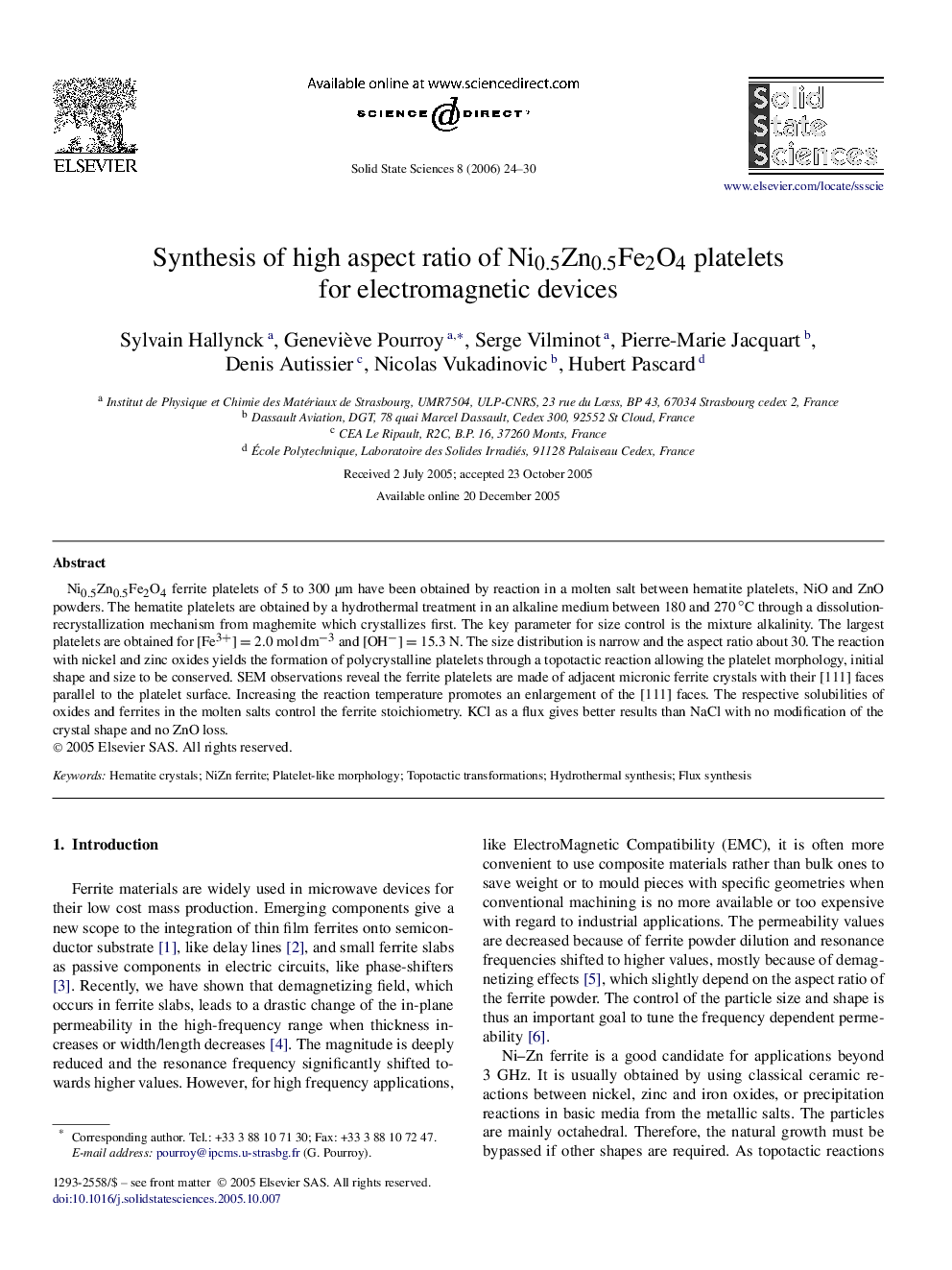| Article ID | Journal | Published Year | Pages | File Type |
|---|---|---|---|---|
| 1506935 | Solid State Sciences | 2006 | 7 Pages |
Abstract
Ni0.5Zn0.5Fe2O4 ferrite platelets of 5 to 300 μm have been obtained by reaction in a molten salt between hematite platelets, NiO and ZnO powders. The hematite platelets are obtained by a hydrothermal treatment in an alkaline medium between 180 and 270â°C through a dissolution-recrystallization mechanism from maghemite which crystallizes first. The key parameter for size control is the mixture alkalinity. The largest platelets are obtained for [Fe3+] = 2.0 molâdmâ3 and [OHâ] = 15.3 N. The size distribution is narrow and the aspect ratio about 30. The reaction with nickel and zinc oxides yields the formation of polycrystalline platelets through a topotactic reaction allowing the platelet morphology, initial shape and size to be conserved. SEM observations reveal the ferrite platelets are made of adjacent micronic ferrite crystals with their [111] faces parallel to the platelet surface. Increasing the reaction temperature promotes an enlargement of the [111] faces. The respective solubilities of oxides and ferrites in the molten salts control the ferrite stoichiometry. KCl as a flux gives better results than NaCl with no modification of the crystal shape and no ZnO loss.
Related Topics
Physical Sciences and Engineering
Materials Science
Ceramics and Composites
Authors
Sylvain Hallynck, Geneviève Pourroy, Serge Vilminot, Pierre-Marie Jacquart, Denis Autissier, Nicolas Vukadinovic, Hubert Pascard,
